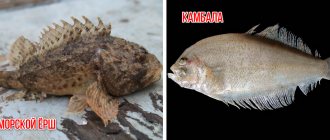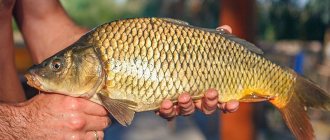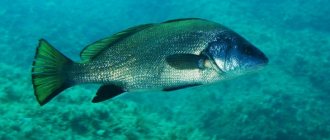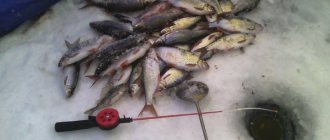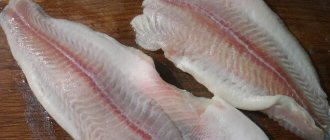Peculiarities
Tugunok is a valuable commercial fish from the whitefish family. The smallest of all representatives of the noble species, the salmon order. Life expectancy is 6 years. Tugunok is a whitefish. The quality of meat is no different from nelma, whitefish, whitefish, and vendace. In Tomi, tugun is called a manner. This omnivorous fish is very tasty, especially good when salted, spiced, and sagudai, or fresh salted fish, took third place at one of the international competitions, ahead of dishes with truffles and the famous French snails.
Habitat
Tugun loves the cold water of Siberian rivers. There it is affectionately called tugunok (fish). Where is this wonderful fish found, where does it breed, where does it fatten? Tugun is considered endemic to Siberia, but experts say that it also thrives in the rivers of northern Canada.
Reaching the point where it flows into the seas of the Arctic Ocean, it does not enter salt water and returns back. Migration is a continuous process. Tugun spawns in shallow water - in oxbow lakes, that is, in old, silted mouths - of the Yenisei, from Shushenskoye to the mouth. Favorite places are Nizhnyaya and Podkamennaya Tunguska, Angara.
It is also found in large quantities in the Ob basin. In the tributaries of the Tavda, Lozva and Northern Sosva, tugun is of commercial importance - here there are most oxbow lakes suitable for spawning. Hence the self-explanatory name - Sosvinskaya herring. Tugun is also caught in Lena, but here it is most infected with helminths.
FROM LAKES TO RIVERS AND BACK
Tuguns live in the reservoirs of the Arctic Ocean, from the Ob and its tributaries in the west to the Yana River in the east. The fish spend the warm season mainly in floodplain lakes and oxbow lakes. However, the tugun can also be found on various stretches and channels with a slow flow, but it avoids fast-flowing rivers, not to mention areas with rapids and rifts. In summer, the fish prefers fairly deep, but well-warmed areas of reservoirs. The tugun does not go into the sea; it has never been encountered even in the brackish-water part of the lower reaches of the river. But the nature of the bottom does not matter much for this fish. Of course, she has her own preferences: more often she chooses sandy or small pebble areas. But this is not a necessary condition; tuguns can also live en masse in reservoirs with a muddy bottom.
In the second half of August, fish gather in large schools and migrate for spawning and wintering to larger rivers, where they form fairly massive aggregations. After the ice melts, they return to smaller rivers, channels and other reservoirs of river floodplains, where they fatten.
There is a certain duality in the behavior of the tugun. On the one hand, like all whitefish, it is very demanding on the purity and quality of water, its oxygen saturation. This condition, as a rule, is satisfied by the coldest northern rivers and lakes. However, in summer the tugun chooses relatively warm, well-warmed bodies of water. True, it should be borne in mind that clean, transparent water is more permeable to sunlight, which warms it to a greater depth than cloudy water.
Reproduction
The tugun lays its eggs in the shallow mouths of the tributaries of the Ob and Yenisei. Prefers calm water, without rapids and riffles, with a sandy and pebble bottom. At night, it goes out into shallow water. It fattens up during the flood period. Then the fish fills the stretch areas with a silted bottom, where they feed on small crustaceans, eggs, mosquito larvae and algae. In July, along with the decline in water, it retreats into large reservoirs. By this time, adults gain maximum weight. Tugunka reaches sexual maturity in the second year of life.
In September-November, during the freeze-up period, spawning occurs. The tugun lays its eggs in river beds on sandy or small pebble spits at a depth of 1.5-2 meters. From one female, depending on age, there are from 500 to 5000 eggs. The fish overwinters in the same place where they spawned.
Description of tugun fish
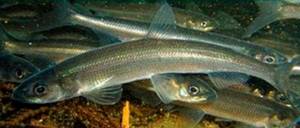
The fish belongs to the salmon family and the whitefish subspecies. This small representative of the salmon family is found in freshwater rivers flowing into the Arctic Ocean. In addition, it is found in all tributaries of the Ural rivers. People also call it manorka or Sosvinskaya herring.
The largest individuals reach a length of no more than 20 cm and weigh up to 90 grams. In the second year of life, she reaches sexual maturity. Can live from 5 to 7 years. The diet of this fish includes insect larvae and plankton.
Shape Features
The body of the fish is distinguished by a rolled shape, which is covered with small scales and which easily fall off if you apply effort. The fish has a silvery tint that varies from darker towards the back to lighter on the sides and belly. In the area of the back behind the fin there is an adipose fin.
Tugun habitat

Despite the fact that the fish is found in waters that do not have high temperatures, this fish prefers to stay in warmer areas located in shallow water, the bottom of which is covered with pebbles, as well as fine gravel with a predominance of sand.
This little fish does not like to be in difficult areas of the water, such as:
- Thresholds.
- Rifles.
Most often this fish can be found at the mouths of small tributaries. During the day, the fish changes its behavior: during the daytime, the tugun prefers to be in the depths, and in the late afternoon it begins to approach the coastal shallows, gathering in numerous schools.
With the onset of spring, when the ice has already completely melted, numerous schools of this fish rush to the beds of small rivers, to shallow channels and other areas of reservoirs that have time to warm up well. In these places, she begins to actively feed. During this period, the tugun chooses areas with a muddy bottom, where there is enough food.
When spawning begins, the fish head to small rivers after reaching 3 years of age. The spawning movement begins at the end of August and continues into September. The spawning begins in mid-September and continues until November, when the reservoirs begin to become covered with ice. The water temperature at this time does not exceed 4 degrees.
Throughout its entire life span, the tugun does not reproduce every year. The fish lays eggs in areas where there is a sand and gravel bottom, the depth of which is no more than 2 meters. Having spawned, the fish remain to spend the winter in the same areas.
Tugun is a fish that is not highly fertile. The population of this fish depends on older individuals, which lay up to 6,000 eggs at a time. Smaller individuals are capable of laying from 500 to 1500 eggs. This is also due to the fact that tugun eggs are relatively large, considering the size of the fish. Its diameter is about 2 mm, and its color is yellow, with a reddish tint.
The tugun's diet consists of various invertebrates that inhabit both the underwater world and its beyond. When another fish spawns, the tugunok easily eats its eggs. The fry of this fish feed on zooplankton. As the fish grows, it switches to feeding on other microorganisms until its diet is replenished with the main food.
When summer comes and the movement of above-water insects begins, the main types of food for the tugun are bell-bellied mosquitoes and mayflies. When these insects and other insects in general disappear, the fish again begins to feed on plankton.
Appearance
It’s impossible to say that the tugunok fish (photos of it are presented in our article) is respectable. The largest is rarely longer than 20 cm. The average size is 10-14 cm. The maximum weight is about 90 grams, the average is about 20 grams. The scales are silvery, shiny, easily falling off, up to 70 on the sides. The eyes are triangular, pointing forward. The jaws are the same size. The anal fin is soft, the caudal fin is rounded and forked. The back is dark, becoming lighter towards the belly - in appearance it is very similar to a herring; on the sides there is a faintly visible pattern in the form of a thin straight stripe from head to tail. The body is elongated, more round in cross section than other representatives of the same family. For this feature, the Sosva herring is called tugunok (fish). The photographs clearly demonstrate this, only ordinary herring is still somewhat darker and larger in size. Tugun is more like smelt, and the smell of fresh cucumber on freshly caught fish adds to the similarity. By the way, the same dishes are prepared from smelt and tugun, but we will talk about this in more detail below.
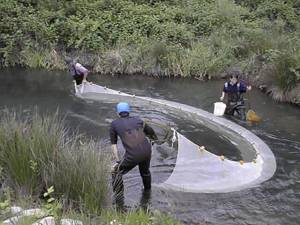
Tugunok in cooking
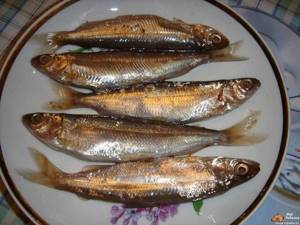
The fish has tender, juicy, aromatic (with the smell of fresh cucumber) meat, and is an excellent source of easily digestible protein, vitamins (PP, A, B12, D), and mineral elements. The fresh product is well suited for smoking, salting, and preparing various dishes, including dietary ones.
The nutritional value
100 grams of fish contain:
- proteins – 19.1 grams;
- fats – 5.9 grams;
- polyunsaturated fatty acids (Omega-3) – 1.2 grams;
- calorie content – 130 Kcal.
Omega-3, which is part of tugunka, increases immunity, reduces inflammatory reactions, normalizes vascular tone, stabilizes cell membranes, and activates brain activity.
Delicious dishes
Cooking tugun dishes does not require special experience, knowledge and skills. It is good in any form (salted, fried, baked, boiled). The only thing that cannot be overlooked is the freshness of the product. Fish spoils quickly, and even when freshly frozen, it is not recommended to store it for more than three weeks (the taste of the product deteriorates).
Stuffed potatoes
- 150 – 200 grams of tugun fillet;
- 6 large potatoes of the same size;
- small onion;
- 4 tbsp. spoons of sour cream;
- 1 tbsp. spoon of ghee;
- salt and spices to taste;
- 1 raw quail egg (or half a raw chicken egg).
Boil the potatoes in lightly salted water, peel the skins, remove the tops and remove the cores. Grind the fish fillet and boiled potatoes (tops and cores) in a meat grinder, mix with finely chopped onion, spices, egg, add a spoonful of sour cream. Stir the resulting mixture well and add salt. Fill the prepared potatoes with minced meat, place on a greased baking sheet, pour in sour cream and bake for 20 - 25 minutes at 180°C.
Casserole in a pan “Lazy cook”
- tugun – 1 kg;
- sour cream – 150-200 grams;
- salt, spices.
Clean the fish from scales, remove the head, fins, entrails, and rinse well. Place in two layers on a cast iron frying pan, add salt and your favorite spices, pour in sour cream. Cover the container tightly with a lid, put on moderate heat, fry until cooked (at least 20 minutes) without stirring, make sure that the fish does not burn. The dish is served hot and goes well with boiled potatoes, fresh vegetable salad and bread.
Tugun fish is the cherished dream of a true fisherman and a true gourmet.
Fishing
In the north of the Krasnoyarsk Territory, it is allowed to catch tugun with a drag line. This is a small drag net. In other places this method of fishing is prohibited, and only at the mouth of the Yenisei this rule does not apply. You just need to purchase a license. Currently, the population of this fish is too small and reproduces slowly, which is why fishing standards have been tightened. Nobody wants the tugunok (fish) to completely disappear from Russian rivers. How to fish in other places, for example in Yakutia? Very simple - with a fishing rod. During the fishing season, the tugunka just jumps out of the water - just have time to change the bait. It is excellently caught on bloodworms and mosquitoes. In order to provide for your family and treat your friends, one fishing trip in the spring or early summer is quite enough. In any case, you won’t be able to catch more than two kg at a time - the fish are too small. But how delicious it is! Still a white fish, albeit a small one. We will tell you in due time what dishes tugunok fish is suitable for.
Fishing Features
Every fisherman who has once hunted tugunka knows how exciting it is. Winter or summer fishing, from the shore or a floating craft, using a seine - any activity will be successful if you know where the tugun lives and what gear to use for fishing.
The most favorable time for catching tugunka:
- End of winter. Many anglers claim that miniature fish become active when there is last snow. For successful hunting, a regular winter fishing rod and jig are used. The role of bait in such cases goes to small worms, bloodworms, and burdock fly larvae.
- Late summer or early autumn. Perhaps fishing during this period can be called the most productive and varied. For fishing, you can use a seine (usually used after sunset), a simple float rod when fishing for tugun from the shore, or winter gear with a jig when fishing from a boat. The best summer bait is mayfly, mosquitoes, small worms and flies, and bloodworms.
Tugun is a shy fish, so there is no need to feed it. The slightest noise can scare away the decoy and force it to leave its parking spot. If the hooking is unsuccessful, if the fish breaks away, the entire school may leave the dangerous area. Experienced fishermen say that you need to hook a tugunka confidently, quickly, without hesitation immediately after the first bite.
A few fishing tricks that people resort to when fishing for manna:
- Active fish biting is observed after sunset, then a small representative of the whitefish genus comes close to the shore in search of food. The ideal conditions for getting a big catch are a moonless night.
- When fishing at night, you should use bright flashlights that will attract the attention of a large school of tugun.
- To avoid fines for poaching, in many reservoirs it is prohibited to use a seine to catch tugunka. When going fishing, it is better to take a regular fishing rod or fishing rod with you.
- Winter fishing is good if you catch small fish by fly fishing or in mid-water. To do this, use a comfortable fishing rod or spinning rod for fishing tugun. Fishing tackle can be very different, but winter jigs are especially popular, for which fish work well even in summer.
- You should look for large specimens in underwater holes, the depth of which reaches 4.5-5 meters. A simple float rod is used for fishing. To increase the chance of getting a big catch, you need to take several gear with you, find 2-3 holes and fish in the most catchy place where there is an active bite. In just 5 hours, you can catch more than 100 fish in such an area. The daily catch rate is considered to be 20-40 pieces from one hole.
- Experienced fishermen advise using chironomid or mayfly as bait when fishing. An alternative option could be bloodworms, small maggots, and burdock.
When fishing for tugun, you must be quiet and careful. The fish should be hooked immediately after the first bite, which can be easily noticed due to the active twitching of the float. Don't wait until the buoy sinks. If the tugunok breaks loose, it will take the entire flock with it to another place.
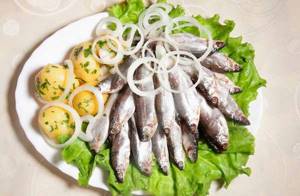
Fishing tricks
Catching tugunka is a pleasure - you don’t need any additional food or special bait. The most productive fishing is at sunset and before dawn. At this time, the tugunok is actively feeding. A moonless night is the ideal time to hunt tugunka. Fishermen put out lanterns that attract flocks, and tuguns walk in schools. Whether on a hook or in a drag, they themselves jump, for this reason, fishing with a seine is prohibited - with such barbaric catching, there will be no one left to come to spawn.
In winter, the coolest time is on the last piece of ice. Then you can fly fish and fly fish. A bottom fishing rod, float rod or spinning rod is suitable. The jig, of course, is a winter jig, although in the summer they catch tugunka with it. The fly is tied on hook No. 16.
Tuguns love pits. The optimal depth is five meters. In this case, you can make complementary foods from cake, chironamide and anise. Float tackle in half water. Fishermen dig several holes, and where the bite is first, they lower several fishing rods there. In one fishing trip (five hours) you can catch up to 120 pieces, but this does not happen often. The usual norm is 20-40 pieces from one pit.
Experts in the secrets of catching tugunka advise making a boat, and using chironamide or mayfly as bait - this is ideal. At worst - small maggots, worms, burdocks, horse flies, bloodworms, mosquitoes. Hook at the first bite, don’t wait until it sinks - it twitches very quickly. The lost fish will leave on its own and lead away the entire school.
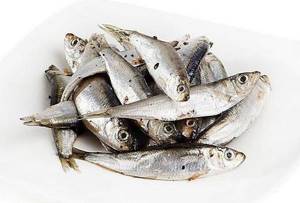
Fishing for tugunka
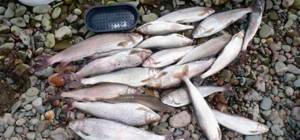
Fishing for tugun is a very interesting, and, in a sense, gambling activity.
It is divided into two periods:
- Winter. During this period, fishing, according to fishermen, is best on the last ice. A winter fishing rod with a jig is used; small worms, burdocks, and bloodworms are used as bait.
- Summer. In summer, the best catch is from mid-August to mid-September. Fishing for tugun:
- Seine. It is best to do it at night when the moon is not full.
- From the shore. Recommended with a fishing rod with a float, fly fishing and spinning.
- From the boat. Use a winter fishing rod with a jig. On the water it is done in two ways - lower the bait to the very bottom, twitch slightly from time to time and lower it to half the depth.
In the summer, the best bait for catching whitefish is: mayfly, mosquitoes, worm, bloodworm, small fly. There is no need to feed the tugun while fishing, as it is a shy fish.
If one fish falls off, the school may disappear entirely. To avoid this, it is recommended to hook sharply at the first bite. For a good bite, you need to start catching tugun from the beginning of sunset until complete darkness. At this time, the whitefish is hungry and comes out to the coastal spit to feed.
Chemical composition
Those who have tried tugunka once will never forget its taste. It is no coincidence that tugunok fish was very often present on the table of the general secretaries of the Soviet Union. The composition of this delicate fish is truly unique - there is very little fat in it - only 14%, but the consistency is such that the fish seems oily. This is typical for all whitefish. This property is explained by the high content of polyunsaturated linolenic fatty acid, which, by the way, is considered the best natural immunomodulator. Nutritionists know well the benefits of tugunok fish. Freshly salted fish is rich in vitamins PP (niacin equivalent), B12, A and D, as well as fluorine, molybdenum, nickel, chromium, phosphorus, sulfur and zinc. Most of the listed substances are contained in the bones and scales of fish, and they are so soft that, when properly prepared, they are eaten without compromising the taste. They literally dissolve with salt and also when cooked.
It should be noted that during heat treatment most of the vitamins are preserved. PP, of which there is a record amount in tugunka, has the greatest effect on blood vessels, restoring the tone, elasticity and permeability of both veins and arteries, and the smallest capillaries. Tugunok fish, the benefits of which are beyond doubt, is one of the products recommended for the prevention of heart disease. It is also included in the wellness menu of cardiological sanatoriums, as well as other cardiovascular medical institutions.
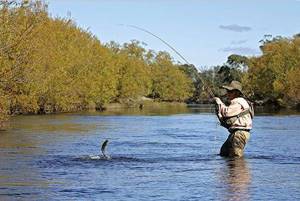
Beware: parasites!
Tugunok fish, the beneficial properties of which we have described in sufficient detail, is found only in fresh water bodies, which means that it is very often infected with parasites that are dangerous to human health. Diseases that can be contracted by eating any freshwater raw fish are known - these are opisthorchiasis, ligulosis, metagonimiasis, nanophyetosis, diphyllobothriasis, clonorchiasis and others. Tugunok, unfortunately, is no exception. Infection with worms is often mistaken for an allergy or food poisoning. The symptoms of helminthic infestations are indeed similar to them - nausea, vomiting, intestinal upset, sharp pain in the stomach or right hypochondrium, headache, high fever, skin itching and rashes, belching, heartburn, flatulence, intolerance to fatty foods or bitterness in the mouth . All parasitic infections are easy to prevent, but difficult to treat. There is no need to be afraid of diseases, but you need to be aware of them when going fishing or buying fish from producers. When cooked correctly, fish will only bring health benefits. What is proper preparation? This is strict observance of the following commandments.
Mandatory safety rules
Before it gets onto the table and then into the stomach, tugunok fish must be properly prepared - under no circumstances should it be eaten raw. It is possible to eat cold and hot smoked fish, spicy salting, boiled, fried and baked.
Boil, fry and bake on coals or in the oven for at least 20 minutes. Long-term heat treatment only benefits the Minorca - bones and scales become completely invisible, the taste of the broth becomes rich and thick. Fried tugunok fish simply melts in your mouth.
When frozen, the eggs and larvae of parasites also die. A temperature of -27 degrees will kill them in 12 hours, but the taste properties of tugunka are lost as a result of freezing and the famous cucumber aroma disappears.
Hot and cold salting for one and two weeks, respectively, will also disinfect the fish. As for dry salting of uncut and flogged fish, in the first case it will be ready for consumption in 9-13 days, and in the second - in 7-12.
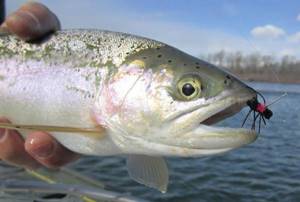
Primary processing of freshly caught fish
It is better to immediately cut up and salt freshly caught fish. If you do this in the evening, then by lunchtime the next day you can eat. To exclude helminthic infestation, the caught fish must be immediately placed in brine - strongly salted water (for 2 liters of water - 1 glass of salt). At the end of fishing, cut off the heads and remove the entrails, rinse again, sprinkle with salt, pepper, fresh onions, pour over vegetable oil and vinegar - you can eat the next day. The fish will not take excess salt, but if you want fresher salt, then it is not forbidden to wash the finished fish with boiled water.
Sprats
To prepare sprats, you need to take an enamel pan, preferably with a double bottom, salt, pepper, vegetable oil, vinegar and 1-2 kg of fresh tugun.
Wash the fish, pour a little oil into the bottom of the pan, add a layer of thinly sliced onion and a layer of fish. Salt, pepper, again add a thin layer of onion, one bay leaf, ground coriander and juniper seeds (just a little), sprinkle with two tablespoons of vinegar and one tablespoon of oil. Then put a layer of fish again, onion and seasonings on it, as on the first layer. Place all the fish in this manner.
Cover tightly with a lid and place in a hot oven for 5 hours. Reduce heat to 180 degrees. The fins, scales and bones will soften so much that they will not be felt at all.
Carefully place the sprats into sterile jars, wait until they cool down, and put them in a cool place.
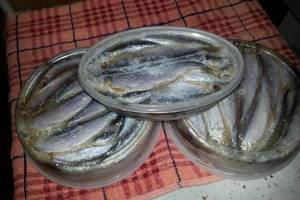
Basic Recipes
To prepare this delicious fish, you can use the well-known recipes presented below.
Spicy salted tugunok

To prepare the final product you will need:
- 1 kg fresh unpeeled fish.
- 1 tbsp. spoon of salt.
- 55 ml water.
- 3 pieces of bay leaves.
- 1 teaspoon coriander.
- 15 peas of allspice.
- 7 grams of cumin.
- 4 nutmegs.
Cooking steps:
- Fresh fish must be sprinkled with salt.
- The tugunka salted in this way is placed in rows in enamel or glass dishes.
- Water is poured into a separate container, with spices added, and placed on fire. The composition is brought to a boil and removed from the heat. After this, the marinade should cool.
- After cooling, the marinade is poured over the cooked fish.
- The fish is covered and a weight is placed on top. In this position, it is sent to the refrigerator for a couple of days. After this time, the fish is ready to eat.
Salting tugun
Ukha from tugun
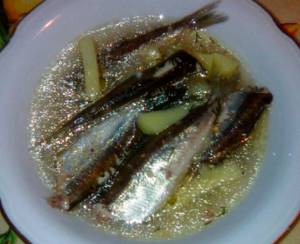
To cook a delicious soup you need to have:
- 1 kg of fresh tugun.
- Up to a dozen potatoes.
- 100 grams of rye flour.
- A bunch of dill.
- A couple of bunches of green onions.
- Spices and salt to taste.
How to prepare:
- The fish is cleaned, removing the head and entrails.
- The potatoes are chopped into cubes and poured into already boiling water.
- When the potatoes are almost cooked, fish, salt and spices are added to it.
- Flour is added here and stirred thoroughly to avoid the formation of lumps.
- After this, the soup is covered with a lid and simmered over low heat for 10 minutes.
- Then, when the dish is almost ready, finely chopped green onions are added to it.
- The fire is turned on, after which the soup should brew for 30 minutes. The result is a very tasty and healthy dish, which is served in plates.
Ear
Peel the potatoes, cut into small pieces and cook. Remove fresh fish from intestines and heads and rinse. When the potatoes boil, add salt, black peppercorns, bay leaves and one whole onion directly with the peel (it will give the dish a beautiful golden hue). After 10 minutes, put the chopped tugun into the pan. Let everything cook together for another 20 minutes. At the end of cooking, remove the onion. In 20 minutes, the bones and scales are boiled so much that they become invisible in the dish, and the broth is so rich – you’ll lick your fingers!
